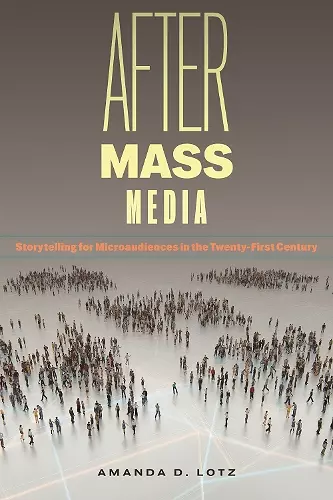After Mass Media
Storytelling for Microaudiences in the Twenty-First Century
Format:Hardback
Publisher:New York University Press
Published:15th Apr '25
£77.00
Supplier delay - available to order, but may take longer than usual.

Explores the cultural role of screen storytelling in society
With significant evolutions in digital technologies and media distribution in the past two decades, the business of storytelling through screens has shifted dramatically. In the past, blockbuster movies and TV shows like Friends aimed first for domestic mass audiences, although the biggest hits circulated globally. Now, transnational distribution plays a primary role and imagined audiences are global. At the same time, the once-mass audience has significantly fragmented to enable an expansion in the range of commercially viable stories, as evident in series as varied as Atlanta, Better Things, and dozens of others that are not widely known, but deeply loved by their microaudiences.
Delving into the changing landscape of commercial screen storytelling, After Mass Media explores how industrial shifts and technological advancements have remade the narrative landscape over the past two decades. Television and movies have long shaped society, whether by telling us about the worlds around us or far away. By examining the internationalization of screen businesses, the rise of streaming services with multi-territory reach, and the stories made for this environment, this book sheds light on the profound transformations in television and film production and circulation. With a keen focus on major changes in the types of screen stories being told, Amanda D. Lotz unravels the industrial roots that made these transformations possible, challenges some conventional distinctions of screen storytelling, and provides new conceptual tools to make sense of the abundance and range of screen stories on offer.
Through its comprehensive analysis, After Mass Media exposes how contemporary industrial dynamics, particularly the erosion of traditional distribution models based on geography and mass audience reach, have far-reaching implications for our understanding of national video cultures.
"A unique and engaging reformulation of how the evolving structures of transnational streaming media enables new forms of collective identity. Leaving aside media scholarship’s focus on national stories, Amanda D. Lotz offers compelling anecdotes that hook the reader, arguing that both television and film are increasingly tethered to communities of viewers that exceed national boundaries. After Mass Media is a compelling and accessible read for students, scholars, and anyone interested in contemporary media." * Tim Havens, author of Black Television Travels: African American Media Around the Globe *
"Offers compelling analysis of the television institutions and practices that influence the stories we watch in today’s micro-audience, multi-screen, transnational, and streaming era. Moreover, Amanda D. Lotz smartly delineates the changing textual features of screen stories across the history of television, tracing the evolution of narrative techniques since the earliest days of the medium. After Mass Media is a must for media studies majors and more generally for readers that want to understand the whys and hows of TV today." * Michael Curtin, University of California, Santa Barbra *
ISBN: 9781479833887
Dimensions: unknown
Weight: unknown
256 pages